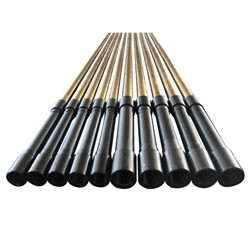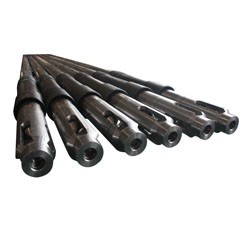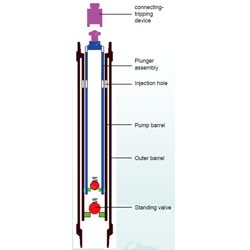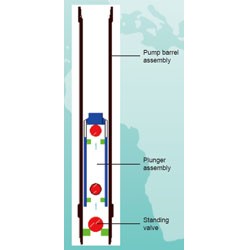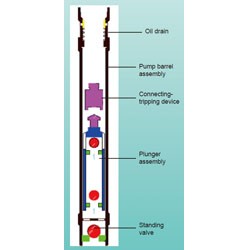Bomba de subsuelo anticorrosión
- Sanjcak has 40 years’ experience in designing and manufacturing downhole pumps. 40 años de experiencia en el diseño y fabricación de bombas de subsuelo
- Sanjack has successfully developed brass and stainless steel sucker rod pumps using precision rolling process. Sanjack ha desarrollado con éxito bomba de varilla de succión de latón y acero inoxidable utilizando un proceso de laminación de precisión
- Sanjack has developed the downhole pumps with various processes of boronizing, nitriding, chrome plating, tungsten plating for corrosive oil wells. Sanjack ha desarrollado las bombas de subsuelo con varios procesos de boronización, nitruración, cromado y tungsteno para pozos de petróleo corrosivos.
Su Premier
Bomba de fondo de pozo anticorrosiva Fabricantes y proveedores
Certificación API 11AX
En 2001, SanJack obtuvo con éxito el certificado API 11AX y comenzó a exportar bombas de subsuelo al extranjero.
Resistente a la corrosión
Varios tipos de bombas anticorrosión resisten eficazmente la corrosión del agua salina Cl-1, SO4-2, HCO3-1, CO3-2, H2S, CO2, Oxígeno etc.
Base de clientes de gama alta
Sanjack ha establecido asociaciones con empresas de fama mundial, como SHELL, CHEVRON, SCHLUMBERGER, GE, NOV, JOHNCRANE, CAMERON, KBM, etc.
Fuerte soporte técnico
Sanjack desarrolló las bombas de subsuelo con varios procesos de boronización, nitruración, cromado y tungsteno para condiciones especiales de pozo.
- Fuerte resistencia a la corrosión.
- Proveedor número 1 de China
- Barril de bomba de acero inoxidable
- Se adopta el proceso de laminación de precisión
- Resistencia a la corrosión y resistencia al impacto
- Pozo de petróleo con alta salinidad.
- Resistencia a la corrosión
- Pozo de petróleo con alta salinidad
- Pozo de petróleo de alto rendimiento
- Alto contenido de H2S, CO2
El taller de bomba del subsuelo de petroleo Sanjack se estableció en 1964, que tiene más de 50 años de historia. Tenemos una rica experiencia en producción y una gran capacidad en investigación y desarrollo. Nuestros productos incluyen varias series de bombas de tubería, bombas de varilla y bomba del subsuelo de petroleo especiales. Obtuvimos 32 patentes de tecnología nacional en la bomba de fondo de pozo. El taller de mecanizado para bomba de varilla de succión está equipado con más de 200 juegos de equipos, incluidos tornos CNC, fresadoras, rectificadoras, etc. El taller de galvanoplastia debomba de varilla de succión cuenta con equipos avanzados de cromado en todo el país para barriles de bombas de subsuelo que puede procesar cilindros de bombas que van desde 1 1/4 pulg. (31,75 mm) a 5 3/4 pulg. (146,05 mm) y con una longitud de hasta 34 pies (10363 mm). El taller de ensamblaje de bomba de sarta de cabilla tiene máquinas de bruñido y dispositivos completos de prueba de presión de bombas y otros equipos. Las pruebas de rendimiento de sellado deben realizarse al 100% después de terminar el montaje de toda la bomba para garantizar plenamente la calidad de nuestras bomba del subsuelo de petroleo.
Send us your requirement, Let Sanjack support you
Anti-corrosion Downhole Pump: The Complete Guide for Importers and Buyers
What is a Corrosion Resistant Pump?
Anti-corrosion refers to the protection of metal surfaces from corroding in high-risk environments.
When metallic materials are put into corrosive environments, they tend to have chemical reactions with the air and/or water.
The effects of corrosion become evident on the surfaces of these materials.
For example, after putting the iron into a corrosive atmosphere for an extended period, the iron starts rusting due to oxygen interaction with water on the iron’s surface.
Therefore, metal equipment lacking preventive measures cn rust, depending upon atmospheric conditions and how much of that equipment is exposed to the air.
You may be asking yourself this question, why would I need this type of industrial pump?
It is an important question because there are certain cases where a standard pump will just not cut it.
If you choose to use a pump that is not explicitly constructed for your work, you will be facing problems down the road that will harm your business and potentially create a hazardous environment as well.
Anti-Corrosion downhole pumps are designed to transfer chemicals, solvents, and other corrosive liquids.
They are constructed with unique materials that can withstand the harsh environment that these corrosive fluids create.
These industrial pumps can be found in many different styles, but they are relativity cost-effective, reliable, and safe, which are all great benefits for you as the consumer.
In the oil industry, there is a wide variety of corrosive environments.
It is important to note that oil and gas production processes require iron and steel pipes, tubing, valves, and sucker rods.
When we talk about some of these types of equipment, we understand that the cost of corrosion can be annoying and denting.
However, to avoid all these problems by choosing the right pumps for corrosive oil wells and applying proper methods of protecting corrosion.
This guide will provide you with essential ways of choosing the best anti-corrosion downhole pumps.
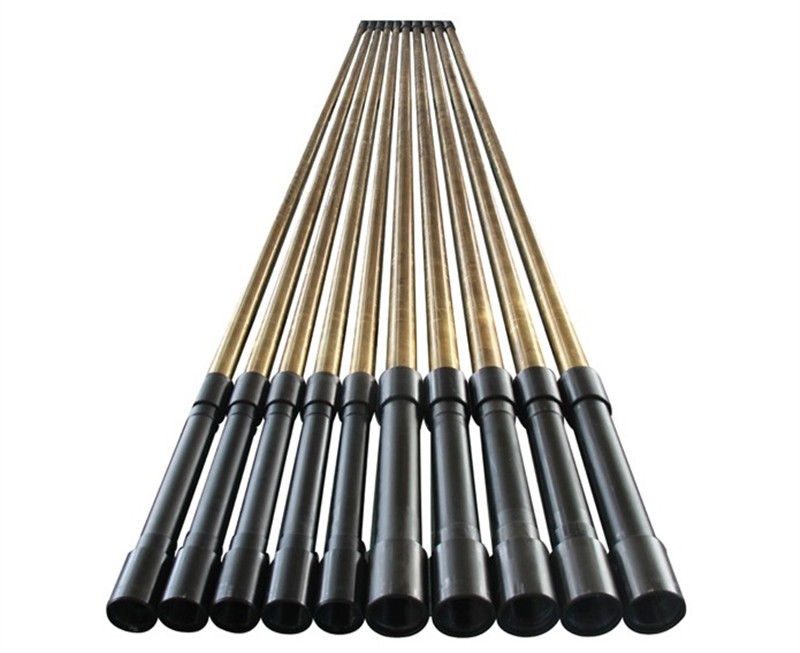
Types of anti-corrosion downhole pumps
- The Anti-Corrosion Pump with Valve Cover Liner
The anti-corrosion pump with valve cover liner enhances the corrosion resistance and impact resistance of the pump and valve cover.
The anti-corrosion pump with a valve cover liner pump is suitable for oil well production with high salinity, easy corrosion, and valve cover fracture.
The Anti-Scale-Anti-Corrosion-Type Oil Extraction Deep-Well pump
The utility model relates to an anti-scale-anti-corrosion-type oil extraction deep-well pump that comprises an outer working barrel, a deep-well pump barrel arranged inside the outer working barrel, and an oil pumping device positioned inside the deep-well pump.
The oil pumping device comprises the following:
- an oil pumping rod
- a drawing rod
- a screwed valve
- a deep-well pump plug.
By adopting the design, the anti-scale-anti-corrosion-type oil extraction deep-well pump can effectively prevent the phenomena of scale formation on the inner wall of an oil extraction pump.
Therefore, it avoids blocking and clamping a pump; work efficiency is improved, and production cost is reduced.
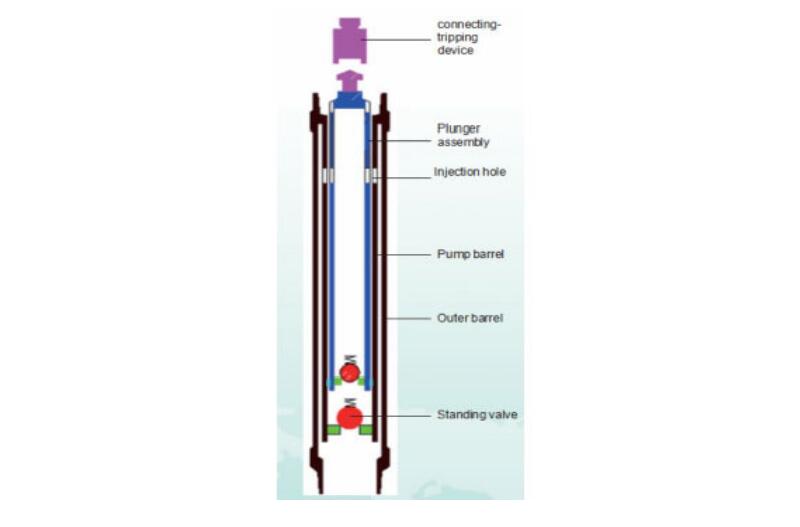
- Anti-Corrosion Tubing Pump
The anti-corrosion pump enhances the oil well pump’s corrosion resistance and is suitable for oil production in oil wells with high salinity and easy corrosion.
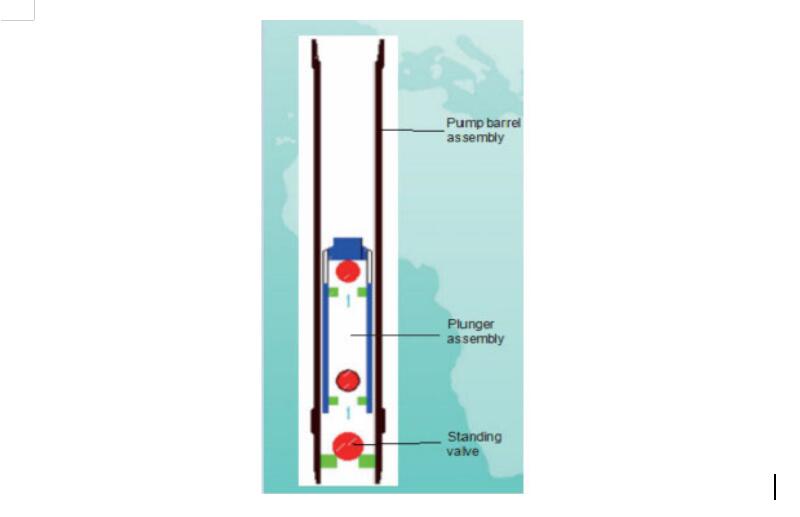
- Integral anti-corrosion sucker rod pump
The integral and anti-corrosion pump is essential for high yield oil well with sufficient liquid supply and large diameter oil well pump to improve liquid output.
This is very important since it solves the problems of tool matching and well fluid corrosion.
The integral ultra-strong corrosion-resistant pump is suitable for oil production in oil wells with enough liquid supply but high hydrogen sulfide content, carbon dioxide, and corrosive media in the well fluid.
The pump barrel is chrome plated with a high-quality stainless-steel matrix.
Moreover, its accessories are mostly made of austenitic stainless steel, and a cemented carbide valve pair is used.
This process greatly enhances the overall corrosion resistance of the oil well pump.
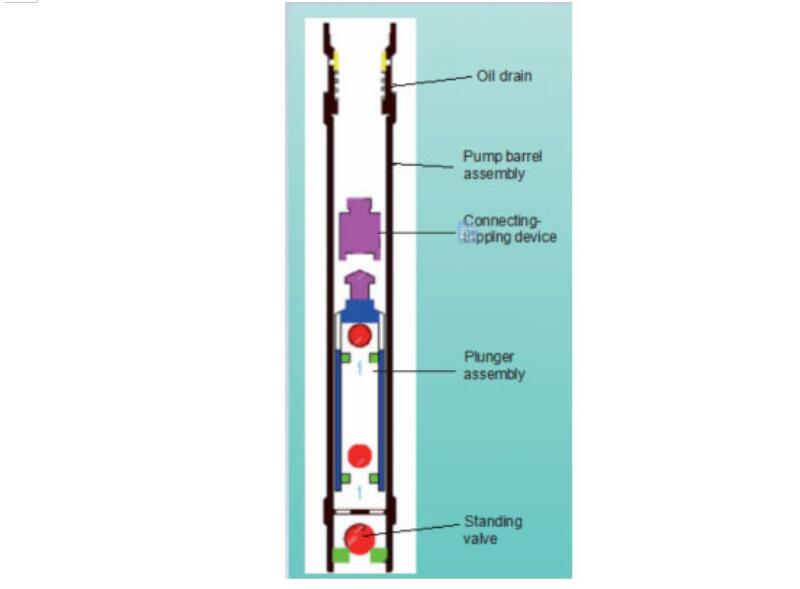
Corrosion control.
The effect of corrosion in the oil industry leads to the failure of parts. This failure results in shutting down the plant to clean the facility.
The annual cost of corrosion to the oil and gas industry in the United States alone is estimated at $27 billion; this is according to NACE International-leading some to estimate the global annual cost to the oil and gas industry as exceeding $60 billion.
Also, corrosion commonly causes serious environmental problems, such as spills and releases.
An essential resource for all those who are involved in the corrosion management of oil and gas infrastructure,
Corrosion Control in the Oil and Gas Industry provides engineers and designers with the tools and methods to design and implement comprehensive corrosion-management programs for oil and gas infrastructures.
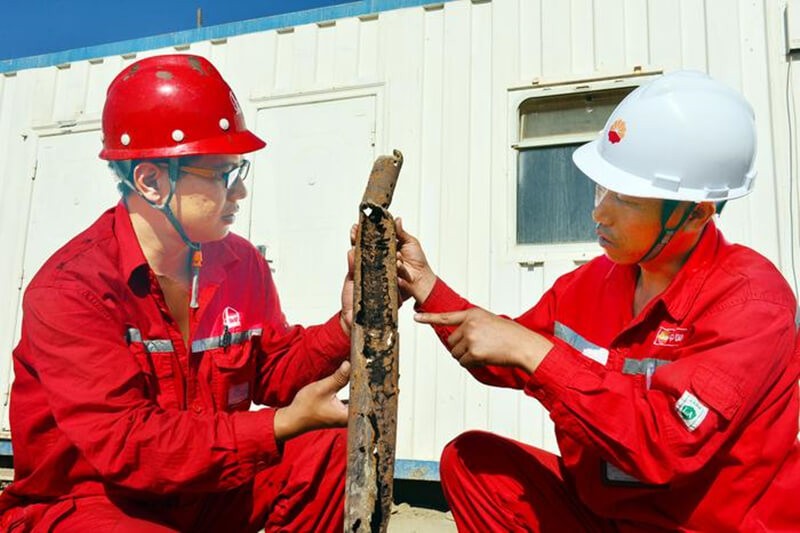
The design of an anti-corrosion downhole pump
The structure of the anti-corrosive oil well pump is designed as a thin-walled rod type oil well.
The pump barrel is made up of the following materials:
- carbon steel
- stainless steel
- navy brass
- Monel
However, Monel and navy brass are more expensive and costly. The internal surface strengthening methods of the pump barrel are divided into hard chromium plating and carbonitriding
The chromium plating process is stronger than the co-inflator process for wearing resistance and corrosion resistance.
If, under the premise of increasing the chromium plating layer’s compactness, chromium steel with a small potential difference with the chromium plating layer is used as the pump barrel’s base material.
The inner hole is plated with hard chromium; this prevents the electrochemical corrosion from occurring.
The ability to resist chemical corrosion is also strong.
The use of stainless steel pump barrel and inner hole chromium plating is a practical solution.
Based on the above conclusions and according to the API oil pump material selection principle, it is determined that the pump barrel uses 1Cr5Mo as the material. 1Cr5Mo is martensitic stainless steel, which can be strengthened by heat treatment.
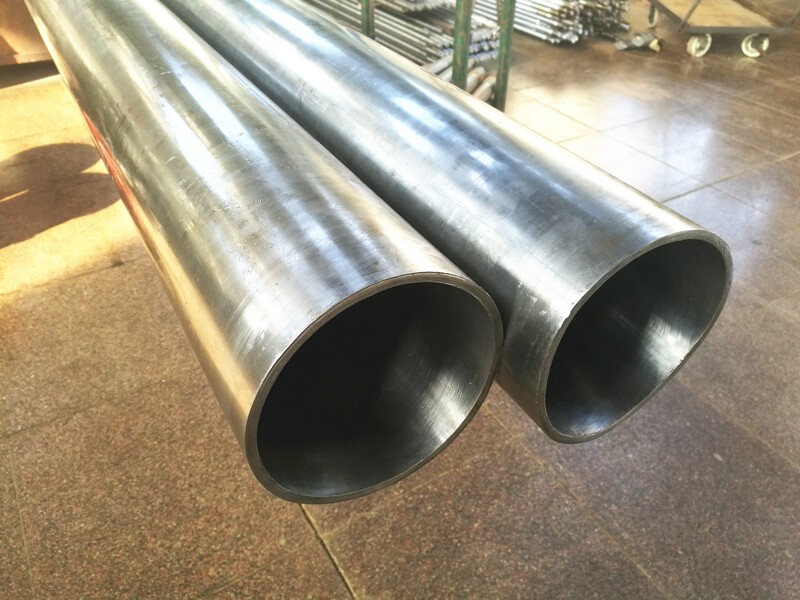
After tempering at an appropriate temperature, it can obtain comprehensive properties such as strength, toughness, and corrosion resistance.
It can usually be used below 400℃.
However, as the strength and hardness increase, the corrosion resistance tends to decrease.
Corrosion mechanism
when the oil well has a high degree of salinity, the well fluid becomes the electrolyte.
If the pump barrel is chrome-plated on carbon steel, the chrome layer’s potential is higher than that of the carbon steel, and electrochemical corrosion will occur.
The chromium plating layer’s bad compactness causes the electrolyte to enter the corrosion between the plating and substrate; this will eventually cause the chromium plating layer to fall off.
However, the wet hydrogen sulphide and carbon dioxide in the well fluid will form dilute sulfuric acid and carbonic acid, resulting in the damage to the pump barrel.
Plunger
The plunger is made up of carbon steel and stainless steel. Because of the later spray welding treatment, the stainless steel spray welding process is complicated.
The quality is difficult to control. The cost is high, so the 45 steel material’s outer surface is sprayed with nickel-based powder.
corrosion mechanism
The higher the strength and hardness of the material, the greater the susceptibility to hydrogen embrittlement corrosion.
The microcrystalline structure of steel also affects hydrogen embrittlement.
Quenched and tempered materials have better resistance to hydrogen embrittlement than normalized and annealed materials.
So, to avoid hydrogen stress cracking caused by hydrogen sulfide corrosion, the rough plunger should be supplied in a tempered state with a hardness of HB190-220.
To improve the anti-corrosion ability of the inner surface and thread of the plunger, after a simulated working condition test on the sample, it is determined that the anti-corrosion measure of the plunger is the overall nickel-phosphorus plating treatment.
Moreover, the outer diameter is finely ground, and then Ni60 nickel-based spray welding powder.
To ensure the anti-corrosion effect, the phosphorus content of nickel-phosphorus plating is 13%. To not affect the thread fit, the thickness of the coating on one side is 0.02mm.
Valve pair
The valve sub-materials are divided into the following:
- stainless steel
- cobalt alloy
- cemented carbide
A comprehensive comparison shows that cemented carbide has good anti-corrosion and impact resistance, so cemented carbide is selected as the auxiliary valve material.
Stellite alloy material is recommended for working conditions with severe corrosion and high impact toughness of the valve pair.
Valve cover
In sand-containing wells, the oil well pump’s valve cover bears alternating loads during work and is impacted by well fluids and valve balls. The material performance requirements are high since the valve cover is prone to erosion, abrasion, stress corrosion, and hydrogen embrittlement.
Cardholder
The ferrule is an elastic part of the rod pump. Its primary function is to seat and seal the entire oil pump. Not only is the material required to have high strength, but also good elasticity.
The commonly used rod-type pump sleeve material is 60Si2Mn quenching treatment, hardness HRC40-46. However, due to the presence of hydrogen sulfide, Carbon dioxide, oxygen, and salts in corrosive oil wells, materials, or surface treatment methods that can prevent corrosion must be selected.
Acid-resistant stainless steel is generally under acid corrosion conditions used as a spring material.
Martensitic 3Cr13 and 4Cr13 have higher strength, hardness hardenability, and thermal strength. Its corrosion resistance is not as good as austenitic stainless steel.
However, it has better corrosion resistance in weakly corrosive media, and at the same time, has better thermal stability.
This type of material is generally used to make springs with higher mechanical properties requirements, lower conditions for corrosion resistance, and operating temperatures below 300°C.
It is determined that the ferrule material still uses 60Si2Mn, but the surface treatment must be carried out to improve the corrosion resistance.
Under normal circumstances, there are three main ways of surface anti-corrosion that includes:
- surface coating anti-corrosion, e.g., chromium plating, nickel plating, copper plating, nickel-phosphorus plating.
- Surface coating.
- Surface matrix treatment anti-corrosion, such as blue, Carbonitriding, Nitriding.
These three methods all form a protective layer on the surface to achieve the purpose of anti-corrosion.
Other components of an anti-corrosion downhole pump
Because other components have low mechanical properties requirements, 2Cr13 stainless steel is used, which is martensitic stainless steel with good corrosion resistance and wear resistance.
Corrosion Control in the industry.
The economic development of any country, state, or region, depends not only on its natural resources and productive activities but also on the infrastructure that supports the exploitation, processing, and marketing of goods.
Irrigation systems, bridges, roads, airports, land, maritime and air transport, school buildings, offices, and housing, industrial installations are affected by corrosion and, therefore, susceptible to deterioration and degradation processes.
Corrosion is a global problem that strongly affects natural and industrial environments. Corrosion and pollution are interrelated harmful processes since many pollutants accelerate corrosion, and corrosion products such as rust, also pollute water bodies.
Therefore, it is crucial to develop and apply corrosion engineering control methods and techniques.
Other serious problems that impact on infrastructure and industry are climate change, global warming, and greenhouse emissions, all interrelated phenomena.
Corrosion Resistance Coating Benefits
Anti-corrosion coatings can help prevent material degradation brought on by oxidation, moisture, and chemical exposure, among others.
They function as a barrier to preventing contact between chemical compounds and corrosive materials. Additional benefits of corrosion-preventative coatings include:
- Rust prevention
- Heat protection
- Erosion deterrence
- Adhesion resistance
Corrosion costs the oil and gas industry tens of billions of dollars in lost income and treatment costs every year.
It should be noted that the damage caused by corrosion is not only in the oil and gas industry but also in other significant areas like building and so on.
Thus, corrosion is a world problem to which everybody must find a solution as it covers many areas in our daily needs.
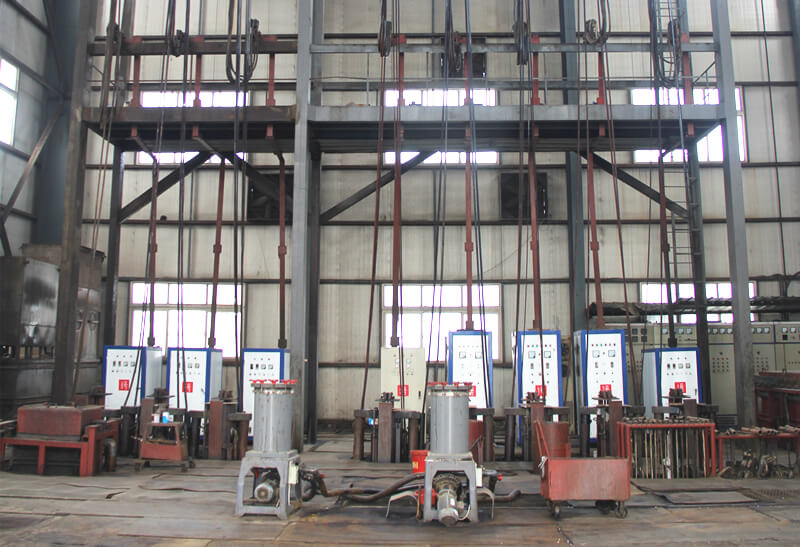
Conclusion
It is not an easy task to select a pump for oil and gas production.
It requires a lot of considerations, especially the conditions of the oil well.
When it comes to working in corrosive oil well, you need an anti-corrosion downhole pumps that can handle the extreme environment without damaging the machines or personnel.
The reengineers also design Anti-corrosive pumps to withstand these conditions safely.
These types of pumps come in a variety and specifications and require special considerations before buying any model.
When you want to purchase anti-corrosive downhole pumps, make sure that you know the safety procedures, factors to consider, and how and where to install them.


